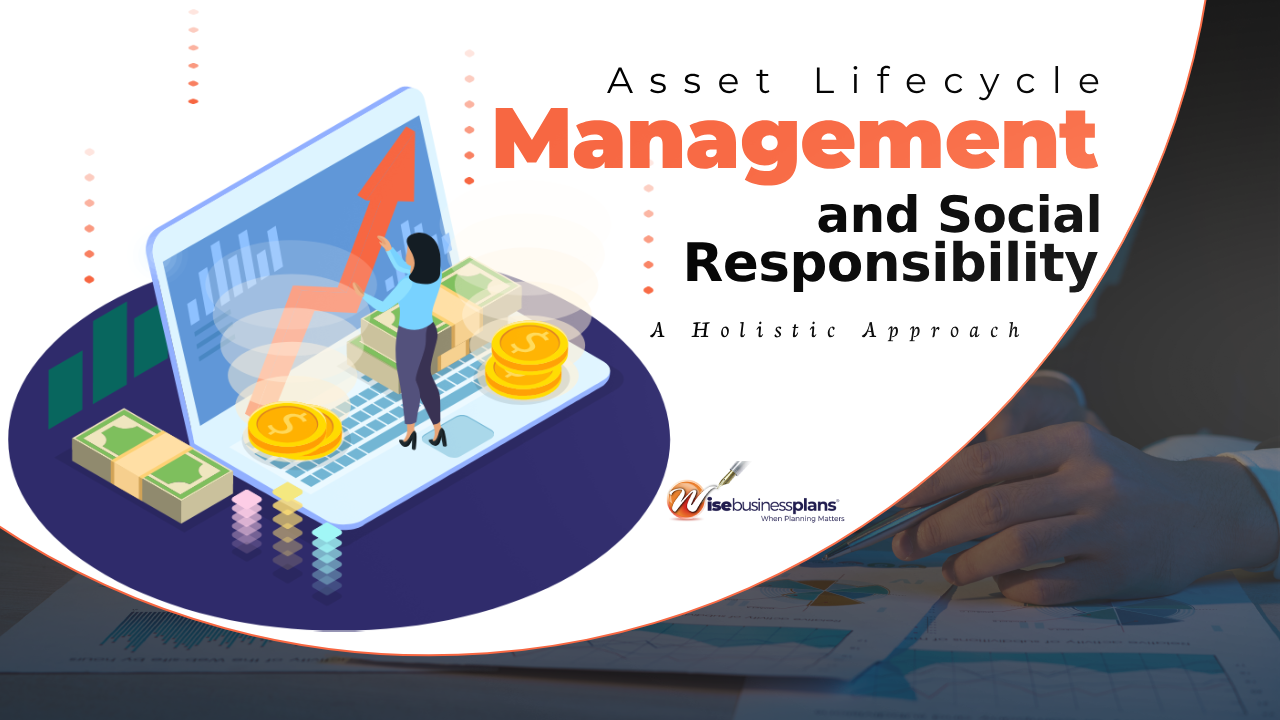Asset Lifecycle Management and Social Responsibility: A Holistic Approach
Table of Contents
In today’s fast-moving business world, managing assets is crucial for keeping things running smoothly, cutting costs, and getting the most out of investments. But it’s not just about money – businesses need to take a view that includes social responsibility as well. This means considering things like impact and ethical practices at every stage of an asset’s life cycle. This article delves into why this approach matters and offers crucial advice for companies looking to do the right thing.
Getting to Know Your Assets
Every asset goes through a range of stages during a fixed asset lifecycle: getting it, using it, taking care of it, and eventually getting rid of it. By seeing assets as part of a larger picture over their lifetime, companies can make an impact on society while also meeting their financial goals.
Doing the Thing from the Start
When acquiring assets, companies should focus on ethical sourcing by setting clear rules for suppliers. This helps ensure fair labor practices and rewards suppliers who care about the environment. Choosing ethically sourced materials not only benefits society but also protects against the risks linked to unethical supply chains.

Looking for someone to write a Business Plan?
Making Assets Work Sustainably
Efficiently using assets is another critical aspect when following social responsibility principles. Organizations should support employees in using resources by offering training on the right kind of handling and maintenance techniques for equipment. Teaching staff about ways to save energy can lead to reduced electricity usage and a significant decrease in carbon emissions.
Upkeep
Maintenance plays a key role in managing the lifecycle of assets requiring attention from a social responsibility perspective. By implementing maintenance approaches that aim to extend the lifespan of assets while minimizing environmental harm, organizations can reap benefits while ensuring optimal performance.
Environmentally Conscious Disposal
It is essential for every organization to address the disposal of assets when they reach the end of their life cycle. This involves adopting eco-friendly waste management practices such as recycling or partnering with organizations for environmentally friendly disposal methods. By ensuring assets are disposed of thoughtfully, businesses can safeguard the environment and prevent toxic substances from contaminating landfills or natural resources.
Assessing Impact
For organizations to fully embrace responsibility in asset management, it is crucial to measure and assess their societal impact. Establishing sustainability-related performance indicators (KPIs) enables businesses to monitor progress, identify areas for enhancement, and communicate openly with stakeholders regarding their dedication to societal objectives.
Working Together Towards a Shared Goal
To effectively manage assets throughout their lifecycle and uphold responsibility, it is crucial for different parties to collaborate. Businesses can team up with suppliers, customers, and industry groups to collectively advocate for ethical practices across the supply chain. Through unified efforts, organizations can drive changes on a larger scale while nurturing an environment that supports sustainable development.
Demonstrating Commitment to Social Responsibility
Companies that successfully embed social responsibility values into their asset management strategies should transparently communicate their endeavors both internally and externally. Sharing success stories not only boosts employee morale but also portrays the company as a conscientious corporate entity mindful of its impact on people and the environment. Involvement in social responsibility projects like community development initiatives further underscores the organization’s dedication to societal well-being.
Conclusion
Amidst a well-connected landscape increasingly focused on environmental issues and ethical standards, embracing a comprehensive approach to asset lifecycle management is no longer just an option but a necessity for lasting prosperity.
This article has delved into several facets of such an approach — procurement, sustainable use, responsible upkeep, environmentally friendly disposal, impact assessment, collaboration towards a common objective, and demonstration of social responsibility—empowering businesses to align financial goals with genuine care for society’s welfare.
In order to create a better future for the next generation, it is crucial for organizations in various industries to strategically implement socially responsible practices. It is important for businesses to consider the impact of their assets and strive to make a difference that reaches beyond their immediate organization.
















